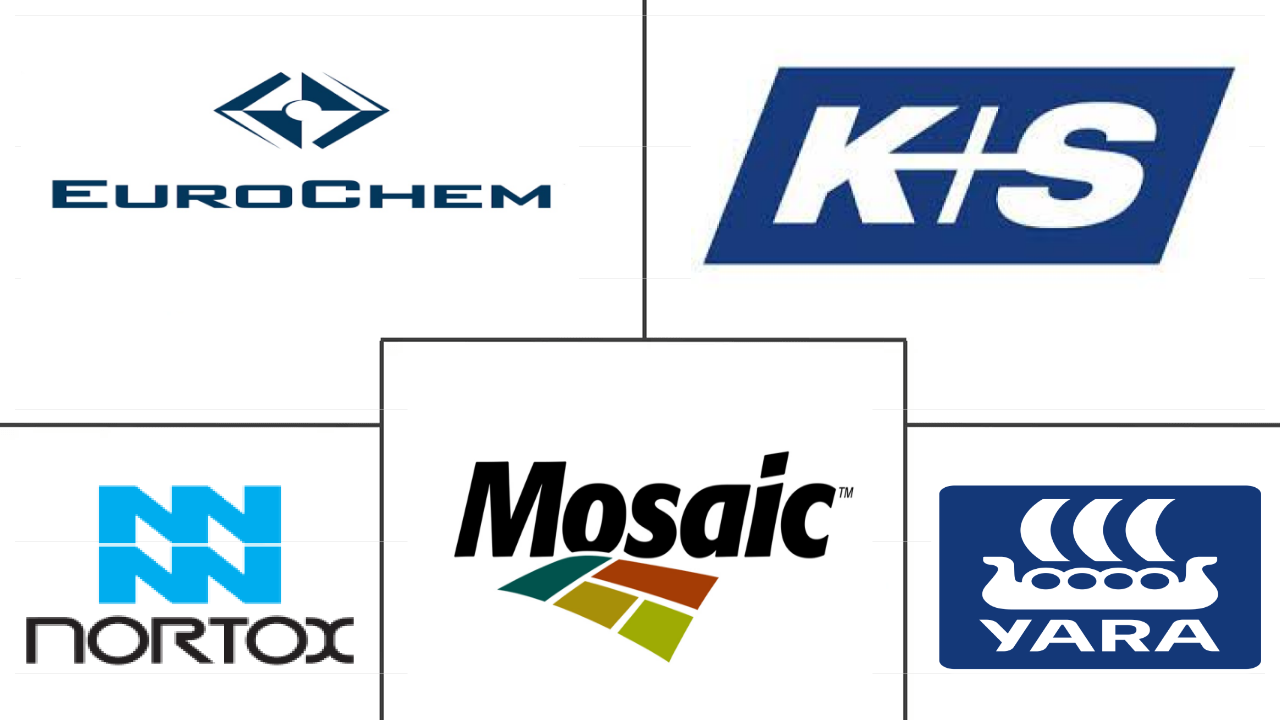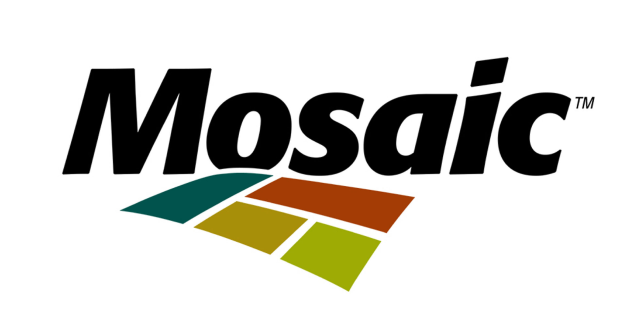Market Size of south america micronutrient fertilizer Industry
| Icons | Lable | Value |
|---|---|---|
|
|
Study Period | 2017 - 2030 |
|
|
Market Size (2024) | USD 492.8 Million |
|
|
Market Size (2030) | USD 690.2 Million |
|
|
Largest Share by Product | Zinc |
|
|
CAGR (2024 - 2030) | 5.78 % |
|
|
Largest Share by Country | Brazil |
|
|
Market Concentration | Low |
Major Players |
||

|
||
|
*Disclaimer: Major Players sorted in no particular order |
South America Micronutrient Fertilizer Market Analysis
The South America Micronutrient Fertilizer Market size is estimated at 492.8 million USD in 2024, and is expected to reach 690.2 million USD by 2030, growing at a CAGR of 5.78% during the forecast period (2024-2030).
492.8 Million
Market Size in 2024 (USD)
690.2 Million
Market Size in 2030 (USD)
4.34 %
CAGR (2017-2023)
5.78 %
CAGR (2024-2030)
Largest Segment by Type
27.33 %
value share, Zinc, 2023
Zinc deficiency being a widespread problem in the region, particularly in the northwestern region of South America, is anticipated to drive the market during forecast period.
Fastest Growing Type
7.29 %
Projected CAGR, Molybdenum, 2024-2030
Foliar molybdenum application acts quickly on the crop and is the best option for correcting molybdenum deficiencies during critical growth stages of various crops.
Largest Segment by Crop Type
94.03 %
value share, Field Crops, 2023
Shifting focus toward balanced nutrition, increasing area under field crops, and need to maintain micronutrient levels in the soil for the proper growth may drive the market.
Largest segment by Country
54.14 %
value share, Brazil, 2023
The key drivers for this market are the availability of expandable acreage, the rising demand for micronutrient fertilizers, and increasing government subsidies.
Leading Market Player
15.66 %
market share, The Mosaic Company, 2022

The Mosaic Co. has proprietary Fusion technology that packs all of the key micronutrients of MicroEssentials into a single granule making it leading market player.
The demand for zinc is higher in the region due to the need to address deficiency to optimize crop yield
- Micronutrients are vital for many plant metabolic activities, such as cell wall development, pollen creation, germination, chlorophyll production, nitrogen fixation, and protein synthesis. Micronutrient fertilizers account for less than two percent of the total fertilizer market value, which amounted to about USD 547.7 million in 2022.
- Among micronutrient fertilizers, iron is one of the most commonly used micronutrient fertilizer in the region in 2022. Iron accounted for about 8.5% of the total micronutrient fertilizer market value, amounting to about USD 46.6 million in 2022. Iron is a component of many enzymes associated with energy transfer, nitrogen reduction and fixation, and lignin formation.
- The application of zinc as a micronutrient fertilizer is the highest in the region, after iron. Zinc deficiency is a widespread problem in the region, particularly in the northwestern region of South America. Zinc accounts for about 27.5% of the total micronutrient fertilizer market value, which amounted to about USD 150.5 million in 2022.
- Soybean and wheat cultivation accounts for about 61.13% of the total agricultural land in the region. These two crops are most likely to suffer from manganese deficiency. Manganese accounted for about 3.7% of the total micronutrient fertilizer market value in 2022.
- Nickel, cobalt, selenium, and chloride are the other micronutrients. The total other micronutrient segment accounts for 11.8% of the region's total micronutrient fertilizer market value, which amounted to about USD 64.6 million in 2022.
- Even though most micronutrients are available in soils, most are immobile in nature and not available for plant uptake. Hence, the demand for micronutrient fertilizers is increasing in the region.
Nutrient deficiencies in the country’s soils translate to a major market share for Brazil
- Brazil dominated the South American micronutrient fertilizer market, accounting for about 60.6% of the total market value, amounting to USD 331.7 million in 2022. The Brazilian micronutrient fertilizer market segment is anticipated to increase to USD 382.2 million by the end of 2030, owing to the growing cultivation area, which increased by about 14.8% from 2017 to 2022.
- Field crops dominated the Argentine micronutrient fertilizer market with a 97.7% market value share in 2022. This dominance was attributed to the larger area occupied by field crops in the country. Major field crops grown in Argentina are soybean, wheat, and maize, which together account for 97.7% of the total crop area. Meanwhile, micronutrient fertilizers consumption by horticultural crops in Argentina was valued at USD 2.84 million in 2022 and is anticipated to reach USD 3.9 million by 2030.
- By application type, soil application dominated micronutrient consumption, accounting for 95.1% of the total volume, followed by fertigation with a 2.5% share and foliar application with a 2.3% share in 2022.
- Farmers are adopting micronutrient fertilizers for their crops to achieve high-quality produce and better yields. Deficiency in micronutrients that are essential for plant growth can lead to lower crop yields. During the past decade, soil micronutrient deficiencies were noticed primarily for zinc, boron, and molybdenum. Soil deficiencies of zinc are widespread in the northwestern region of South America. Hence, the micronutrient fertilizers market in Brazil is expected to grow from 2023 to 2030.
South America Micronutrient Fertilizer Industry Segmentation South America Micronutrient Fertilizer Industry Segmentation
Boron, Copper, Iron, Manganese, Molybdenum, Zinc, Others are covered as segments by Product. Fertigation, Foliar, Soil are covered as segments by Application Mode. Field Crops, Horticultural Crops, Turf & Ornamental are covered as segments by Crop Type. Argentina, Brazil are covered as segments by Country.
- Micronutrients are vital for many plant metabolic activities, such as cell wall development, pollen creation, germination, chlorophyll production, nitrogen fixation, and protein synthesis. Micronutrient fertilizers account for less than two percent of the total fertilizer market value, which amounted to about USD 547.7 million in 2022.
- Among micronutrient fertilizers, iron is one of the most commonly used micronutrient fertilizer in the region in 2022. Iron accounted for about 8.5% of the total micronutrient fertilizer market value, amounting to about USD 46.6 million in 2022. Iron is a component of many enzymes associated with energy transfer, nitrogen reduction and fixation, and lignin formation.
- The application of zinc as a micronutrient fertilizer is the highest in the region, after iron. Zinc deficiency is a widespread problem in the region, particularly in the northwestern region of South America. Zinc accounts for about 27.5% of the total micronutrient fertilizer market value, which amounted to about USD 150.5 million in 2022.
- Soybean and wheat cultivation accounts for about 61.13% of the total agricultural land in the region. These two crops are most likely to suffer from manganese deficiency. Manganese accounted for about 3.7% of the total micronutrient fertilizer market value in 2022.
- Nickel, cobalt, selenium, and chloride are the other micronutrients. The total other micronutrient segment accounts for 11.8% of the region's total micronutrient fertilizer market value, which amounted to about USD 64.6 million in 2022.
- Even though most micronutrients are available in soils, most are immobile in nature and not available for plant uptake. Hence, the demand for micronutrient fertilizers is increasing in the region.
| Product | |
| Boron | |
| Copper | |
| Iron | |
| Manganese | |
| Molybdenum | |
| Zinc | |
| Others |
| Application Mode | |
| Fertigation | |
| Foliar | |
| Soil |
| Crop Type | |
| Field Crops | |
| Horticultural Crops | |
| Turf & Ornamental |
| Country | |
| Argentina | |
| Brazil | |
| Rest of South America |
South America Micronutrient Fertilizer Market Size Summary
The South America Micronutrient Fertilizer Market is poised for significant growth, driven by the essential role of micronutrients in enhancing plant metabolic activities such as chlorophyll production, nitrogen fixation, and protein synthesis. Despite accounting for a small fraction of the total fertilizer market, the demand for micronutrient fertilizers is on the rise due to the immobility of most micronutrients in the soil, which limits their availability for plant uptake. Brazil leads the market, with a substantial share attributed to its expansive soybean and wheat cultivation areas, which are prone to micronutrient deficiencies, particularly in zinc and manganese. The region's diverse soil types, including Oxisols and Ultisols, further necessitate the use of micronutrient supplements to optimize crop yields.
The market landscape is characterized by a fragmented structure, with major players like EuroChem Group, K+S Aktiengesellschaft, Nortox, The Mosaic Company, and Yara International ASA holding significant shares. Recent strategic acquisitions, such as EuroChem Group's purchase of a majority stake in Fertilizantes Heringer SA, aim to bolster production and distribution capabilities in Brazil. The market's growth trajectory is supported by the increasing adoption of micronutrient fertilizers by farmers seeking to improve crop quality and yields, amidst challenges like drought and low water levels affecting harvests and transportation. As the region continues to expand its field crop cultivation, the demand for micronutrient fertilizers is expected to rise, aligning with both domestic and international market needs.
South America Micronutrient Fertilizer Market Size - Table of Contents
-
1. MARKET SEGMENTATION (includes market size in Value in USD and Volume, Forecasts up to 2030 and analysis of growth prospects)
-
1.1 Product
-
1.1.1 Boron
-
1.1.2 Copper
-
1.1.3 Iron
-
1.1.4 Manganese
-
1.1.5 Molybdenum
-
1.1.6 Zinc
-
1.1.7 Others
-
-
1.2 Application Mode
-
1.2.1 Fertigation
-
1.2.2 Foliar
-
1.2.3 Soil
-
-
1.3 Crop Type
-
1.3.1 Field Crops
-
1.3.2 Horticultural Crops
-
1.3.3 Turf & Ornamental
-
-
1.4 Country
-
1.4.1 Argentina
-
1.4.2 Brazil
-
1.4.3 Rest of South America
-
-
South America Micronutrient Fertilizer Market Size FAQs
How big is the South America Micronutrient Fertilizer Market?
The South America Micronutrient Fertilizer Market size is expected to reach USD 492.82 million in 2024 and grow at a CAGR of 5.78% to reach USD 690.22 million by 2030.
What is the current South America Micronutrient Fertilizer Market size?
In 2024, the South America Micronutrient Fertilizer Market size is expected to reach USD 492.82 million.

